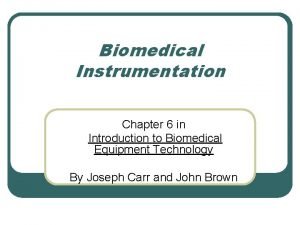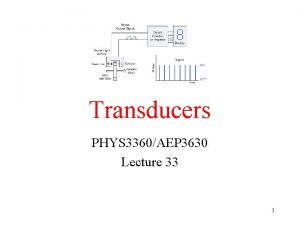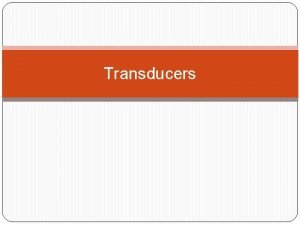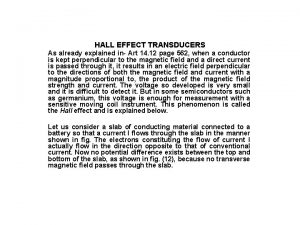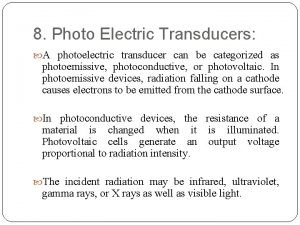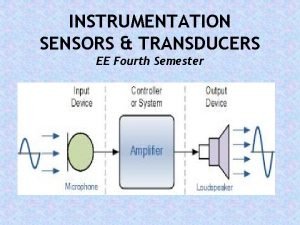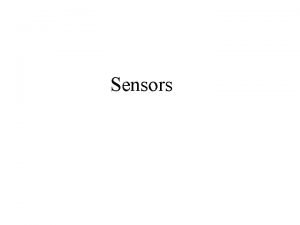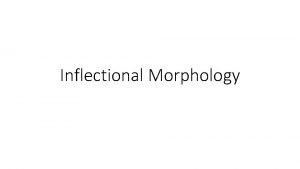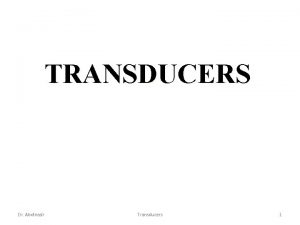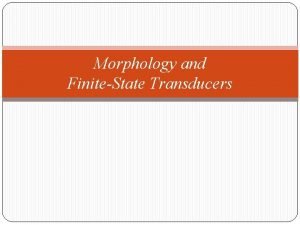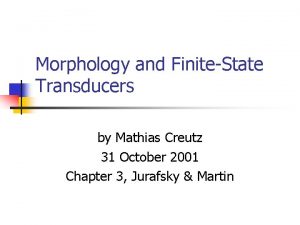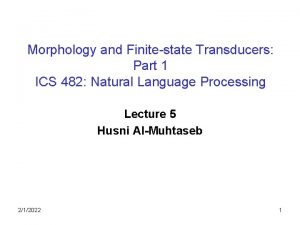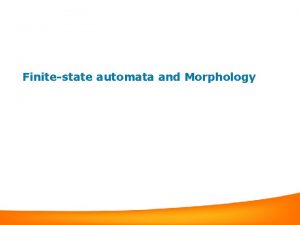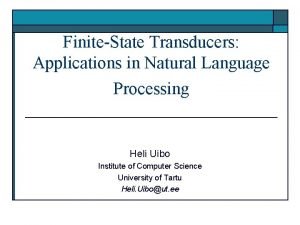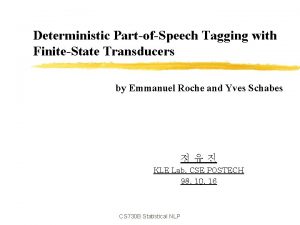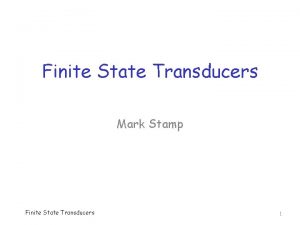Morphology FiniteState Transducers n n Morphology the study










- Slides: 10

Morphology & Finite-State Transducers n n Morphology: the study of constituents of words Word = {a set of morphemes, combined in language-dependent ways} u u n Classes of Morphemes u u n stem (root) affixes (詞綴) Morphological Parsing (or Analysis): u u u n morpheme: small meaning bearing unit e. g. , books = book+s, cats = cat + s breaking down surface forms (or input forms) into stem and affixes e. g. , foxes = “fox” + “-es” (+N, +PL) stemming: mapping surface form to stem (extracting stem from surface form) Morphological Generation: u generate surface forms from stem and morphological features Jing-Shin Chang 1

Morphology & Finite-State Transducers n Applications: u n Knowledge for Morphological Analysis u u n spelling check, tokenization for parsing morphological rules (morphotactics): constituents of words & order spelling rules (orthographic rules): spelling changes Dictionary/Lexicon: u u u list of stems and affixes stems of regular words (plus irregular variants) as indexing keys not efficient to enumerate all morphological variants F F F some morphemes are productive: can be applied to all words or new words (impossible to list all of them) morphological variants depends on spelling as well as pronunciation morphologically complex languages (e. g. , Turkish) may have a large number of morphological variants Jing-Shin Chang 2

Morphology & Finite-State Transducers n Models for morphological analysis/generation u u generate-and-test: enumerate all possibilities & test against constraints FSA / two-level FST model: modeling lexicon, morphological rules and orthographic rules as finite state automata or transducers Jing-Shin Chang 3

English Morphology n Morphology: u u n Classes of Morphemes u u n the study of the way words are built up from smaller meaning-bearing units (morphemes) morpheme: the minimal meaning-bearing unit in a language stem (root): main morpheme of the word, supplying main meaning affixes (詞綴): additional meanings Affixes: u u u prefixes: un-happy suffixes: eat-s infixes: inserted inside the stem F u Philipine language Tagalog: hingi (“borrow”) => h-um-ingi (agent of borrow) circumfixes: F sagen (“to say”) => ge-sag-t (“said”) (German) [pp] Jing-Shin Chang 4

English Morphology n Affixes: u u n Templatic: root-and-pattern u u u n n concatenative: prefix & suffixes non-concatenative: infixes & templatic morphology Arabic, Hebrew, Semitic languages Hebrew: lmd (“learn”, “study”) (tri-consonantal root) active voice template: Ca. C => lamad (‘he studied’) intensive Ci. Ce. C template: => limed (‘he taught’) intensive passive template Cu. Ca. C => lumad (‘he was taught’) Multiple affixes: un-believabl-y Agglutinative languages: u languages that tends to string affixes together (Turkish, Japanese, Korean) Jing-Shin Chang 5

English Morphology n Infection: u u n stem + morphemes => same class e. g. , book + s => books (same meaning, same part of speech(詞類)) Derivation: u u stem + morphemes => different class e. g. , computerize + ation => computerization [verb => noun] Jing-Shin Chang 6

English Morphology n Inflectional Morphology u n Noun: Plural, Possessive u u n Regular: Plural (+s/+es/+ies), Possessive (+’s, +s’) Irregular: ox-en, mouse => mice Verb (main/一般, modal/助, primary/be): u u u n only Noun, Verb, Adjective, Adverb can be inflected Forms: stem (現/不定), -s (現/P 3 SG), -ing(動名/現分), -ed (過/過分/完成) Regular: (+s/+es, -y+ies), -e+ing/+. ing (consonant doubling), +d/+ed/+. ed Irregular: e. g. , eat => ate, eaten (+en), catch => caught Consonant doubling: (短母音)+單子音 => double -c => -ck (picnicked) Adjective/Adverb: comparative/extreme u happy => happier, happiest, happily Jing-Shin Chang 7

English Morphology n Derivational Morphology u u n Nominalization: V/A => N u u n usually resulting in different classes need part of speech (POS) conversion from root POS & affixes to get correct POS computerize => computerization more examples … N/V => A u u computation => computational more examples … Jing-Shin Chang 8

Chinese Morphology n Chinese Morphemes u u u n hard to be distinguished from characters and words and compound words free morphemes bound morphemes Examples u u u 副-總統, 前-妻, 非-經濟(因素) 學生-們 哈日-族, 銀髮-族 業-化, 綠-化, 藍-化, 腐-化, 石-化, 神-化 公務-員, 業務-員, 推銷-員, 運動-員 Jing-Shin Chang 9

Jing-Shin Chang 10
 Microelectrodes in biomedical instrumentation
Microelectrodes in biomedical instrumentation Transducers and sensors
Transducers and sensors Introduction to transducers
Introduction to transducers Hall effect transducers
Hall effect transducers Transducers ppt
Transducers ppt In photo emissive transducers, electrons are attracted by
In photo emissive transducers, electrons are attracted by Angular velocity transducer
Angular velocity transducer Transducers and sensors
Transducers and sensors Bidirectional transducers in automata theory
Bidirectional transducers in automata theory Limitations of lvdt
Limitations of lvdt Derivational morphology and inflectional morphology
Derivational morphology and inflectional morphology
